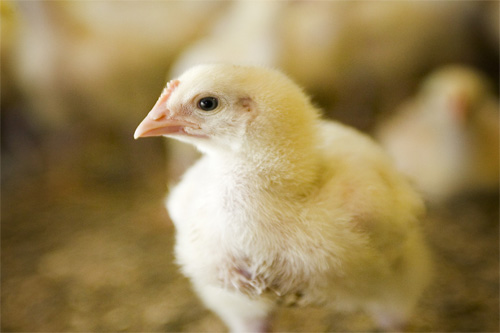Lactylates: a novel approach to enhance gut health

Lactylates, obtained by esterification of lactic acids and medium chain fatty acids, are commonly used in the food and cosmetics industry. They also have potential application in animal nutrition.
By Katarzyna Wijma, technology application specialist poultry and Herman van Iersel, category manager additives, Cargill Animal Nutrition
There are many challenges in modern poultry production that can affect optimal performance of the birds. These suboptimal conditions in poultry production range from diseases such as coccidiosis, or necrotic enteritis to environmental stressors. The subsequent health challenges and stress that results from those conditions induce a diversion of nutrients and energy from supporting animal performance to body defence and adaptive mechanisms.
Antibiotics have been used for many years to prevent, treat and control disease in animals and to optimise the production efficiency of livestock animals. However, in the last two decades a global trend towards the reduction of antibiotics has emerged. Due to antibiotics resistance risk in humans, more and more pressure is being applied by the public, governments and food companies to reduce the use of antibiotics for growth promotion and disease prevention. In this context, supporting intestinal integrity, described as the capability of the intestine to maintain its structure and function, has become a challenge for most nutritionists. Intestinal integrity is the gate-keeper that ensures digestion and absorption of feed nutrients, control of wasted nutrients, good resistance against pathogens, optimised feed conversion, and avoidance of morbidity and mortality.
Lactylates in animal nutrition
There is a very large array of additive solutions that may contribute to better intestine integrity such as medium chain fatty acids, organic acids, essential oils, enzymes, probiotics or prebiotics. A new nutritional concept for animal nutrition called lactylates has been recently added to this list and has recently been shown to support use of nutrients for growth of broilers. The development of lactylates for animal application is a result of cooperation between Cargill Animal Nutrition and Corbion Purac. Lactylates are obtained by esterification of lactic acids and medium chain fatty acids. The resulting molecules may have superior properties to the individual components in the product. In animal nutrition, both components of lactylates, lactic acids and medium-chain fatty acids have been shown to be useful when Salmonella, and Campylobacter or Clostridium perfringens may be present.
Trials with lactylates
An in vitro trial has been conducted in order to identify the influence of different lactylates and MCFA (Medium Chain Fatty Acids) chains on Clostridium perfringens. Exposures were varied by concentration of components and by duration of the exposure (Figure 1). The measurement of viable cells is described as the number of Colony Forming Units per ml of culture (cfu/ml) that can be counted on an agar plate. When comparing the in vitro Minimum Inhibitory Concentration (MIC) of C12:0 (lauric acid) and C14:0 (myristic acid) lactylates to its components, against Clostridium perfringens, it appears that in vitro, lactylates display 100 to 1000 times lower MIC than lactic acids and C12:0 and C14:0 free fatty acids. A metabolic study has been performed with broilers to understand the recovery of lactylates at 7 points of the intestinal tract (from the crop to the colon) after ingestion. In vivo trial shows that lactylates can be found in fair amount in the duodenum and proximal part of the small intestine. Deeper in the gastro-intestinal tract, in the ileum and colon, the amount of lactylates is strongly decreased. However, due to a low Minimum Inhibitory Concentration of lactylates, the remaining quantity is still at the level at which in vitro shifts in microflora occurred (Figure 2). In another trial, lactylates were tested in broilers (Ross 308) from 0 to 28 days. The diets were based on corn, soya bean meal and wheat. Lactylates were tested as were AGPs (Zinc Bacitracin (BMD) and Virginiamycin) and products based on plant extracts and different mixtures of Medium Chain Fatty Acids and Essential Oils in model system producing sub-optimal conditions. Lactylates showed similar body weight gain at 28 day of age compared to BMD or Virginiamycin and significantly better body weight gain compared to other products under challenging conditions (Figure 3). The same trial showed significantly better feed conversion ratio in the Lactylates group when comparing with control group, AGP and competitive products (Figure 4).
Use in sub-optimal conditions
The series of in vivo and in vitro tests (more than 17 trials), which have been performed in Cargill Innovation Centers together with Corbion Purac and independent research institutions worldwide, indicate that lactylates can be ideal for use for poultry under sub-optimal conditions. Sub-optimal conditions in poultry farming may result from coccidiosis, dysbacteriosis, necrotic enteritis, stress caused by vaccination, climate and stocking density, litter quality problem or diets containing raw materials with low digestibility.
References are available on request.
Article featured in AllAboutFeed 22.4 2014











